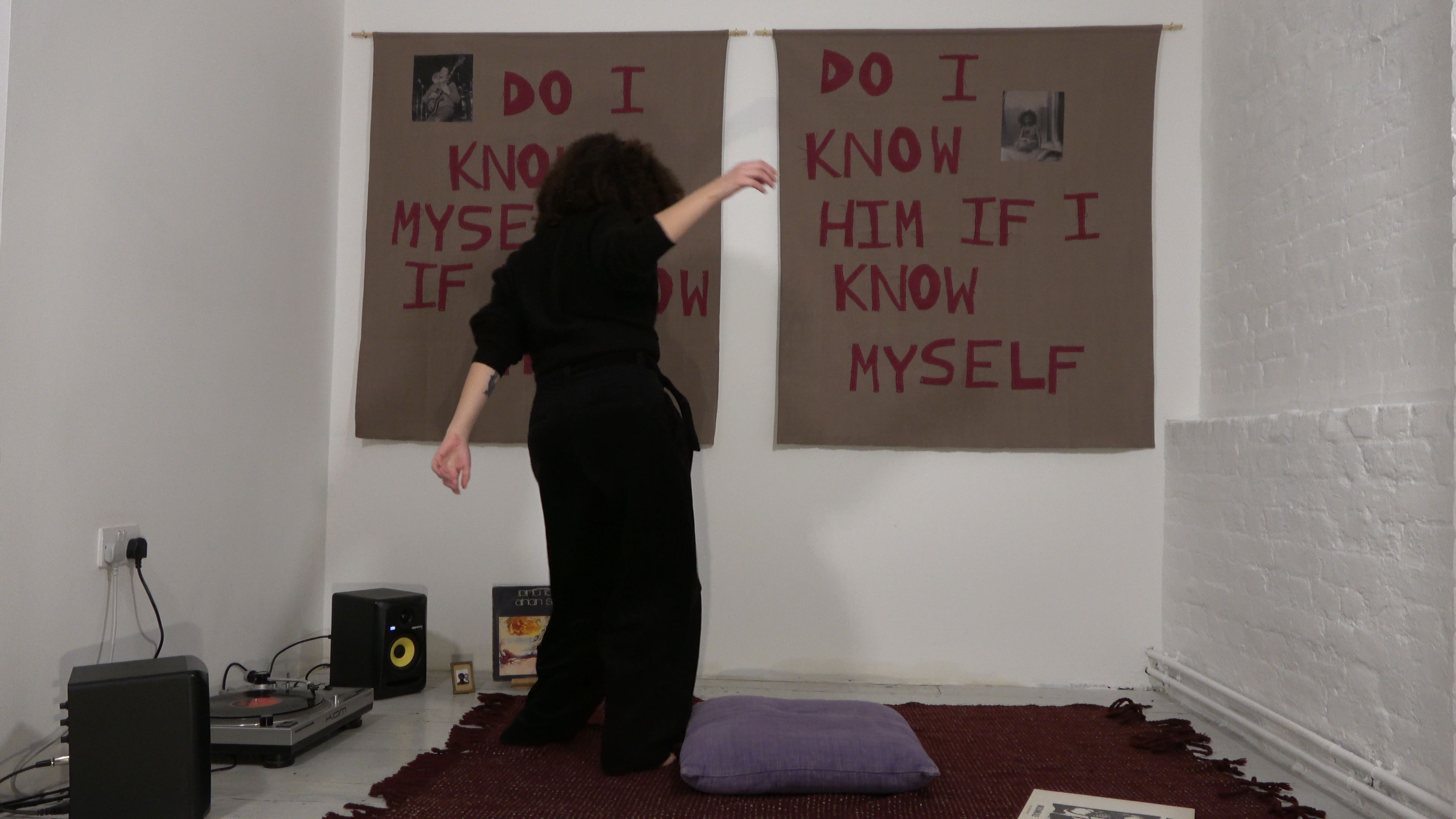20/20 meet the artists: Jamila Prowse

- Written byKatie Moss
- Published date 20 October 2022

In September, UAL announced the eight emerging and mid-career artists in the first of 2 cohorts of 20/20: a national commissioning and network project directly investing in the careers of a new generation of ethnically diverse artists.
20/20 was launched in November 2021 by UAL Decolonising Arts Institute, working with a network of 20 UK public collections, museum and gallery partners, and with funding from Freelands Foundation, Arts Council England’s National Lottery Project Grants Programme and UAL.
We caught up with Jamila Prowse about being selected for the first cohort of artists for 20/20. Her residency is taking place with the National Disability Arts Collection and Archive.
Tell us a bit about your artistic work, discipline & background:
"My practice sits as a hybrid across moving image, textiles and writing but I actually started out as a curator. I always approached curating from a research standpoint and coming up with conceptual ideas around how to tell stories has been a real centre point to everything I do.
"A couple of years ago, a disability I've had throughout my life worsened, partially because of poor working conditions. I ended up living back with my mum, who became my carer, and struggling to stay in work. Curating, which is so reliant on logistical planning and holding space for other people, didn't feel like a possibility anymore.
"Simultaneously, I'd had ideas sitting in the background for a few years around a desire to trace the roots of my ancestry and learn more about my identity through making. Through the encouragement and support of a few key people, I made the move into making work of my own.
"As my disability means I find social interactions challenging, I found a new medium for telling stories which I was able to do from my sick bed and in solitude. At the core of this practice is a curiosity around how to translate the fluidity of identity formation and my lived experience of being a mixed-race disabled person of Black parentage into a visual format. In a way, art making has become a form of processing, healing and self-learning for me, as well as a way to connect with other people on parallel journeys."
Why did you apply for the 20/20 project?
"I was drawn to the 20/20 project because of the opportunity to spend an extended period of time researching and responding to the National Disability Art Collection and Archive (NDACA). Although disability is at the forefront of my thinking a lot of the time, and I've engaged in much research and writing around it, I hadn't fully explored how this might be expanded in relation to the visual.
"When I made my first film, An Echo for My Father (2021), many of the unseen processes were built around my disability. The film is 20 minutes in length and shows me engaging in sewing, listening to my father's music and retracing journeys we took around my childhood home in real time. There isn't much cutting between scenes and jumping around – instead each activity is given its own chapter (3 in total) and allowed to sit and breathe for that duration.
"It felt important to give the film space in order to honour the temporality of slowness as outlined by Tina Campt – not just as a change in velocity but a way to give attention to what might be overlooked – and as a way to work on ‘crip time’ which pertains to the flexibility of time experienced within disabled communities. The film itself was also made on crip time, with rest periods built into the production process. Simultaneously, within the film I'm recorded stitching wall hangings which act as a visual representation for the emotions I am processing during the film; these then hang on the wall in the background of one of the scenes. Stitch-making is a process that helps me manage the symptoms of my disability and create space for myself. So, my disability is very much present, but it isn't necessarily something that will be explicitly picked up by an audience.
"I wanted to find a way to communicate my ongoing research and personal experiences around disability visually. NDACA has a rich archive of artworks and artist interviews, considering what it means to be a disabled artist. Having the chance to learn from their material and oral histories felt like it could directly impact and expand thinking I was already doing but hadn't really had the time to delve into properly."
What conversations, thoughts or feelings do you hope to encourage amongst your audiences during your residency?
"In her 2013 book, Feminist, Queer, Crip, Alison Kafer discusses how within society there's no such thing as a disabled future. The only future disabled people are afforded is one where they are moving towards cure. Society wants to distance itself from the existence of disability, by eradicating it wherever possible. But the reality is many of us live with disability day to day and continue to lead expansive disabled lives. There is such a multiplicity of what disability futures could look and feel like and I hope that my residency might open up more conversations around that; moving towards a disabled future that isn't curative, but instead centres the full, expansive breadth of disabled lives."
Follow Jamila Prowse social media:
Instagram: @JamilaProwse
Website: www.jamilaprowse.com